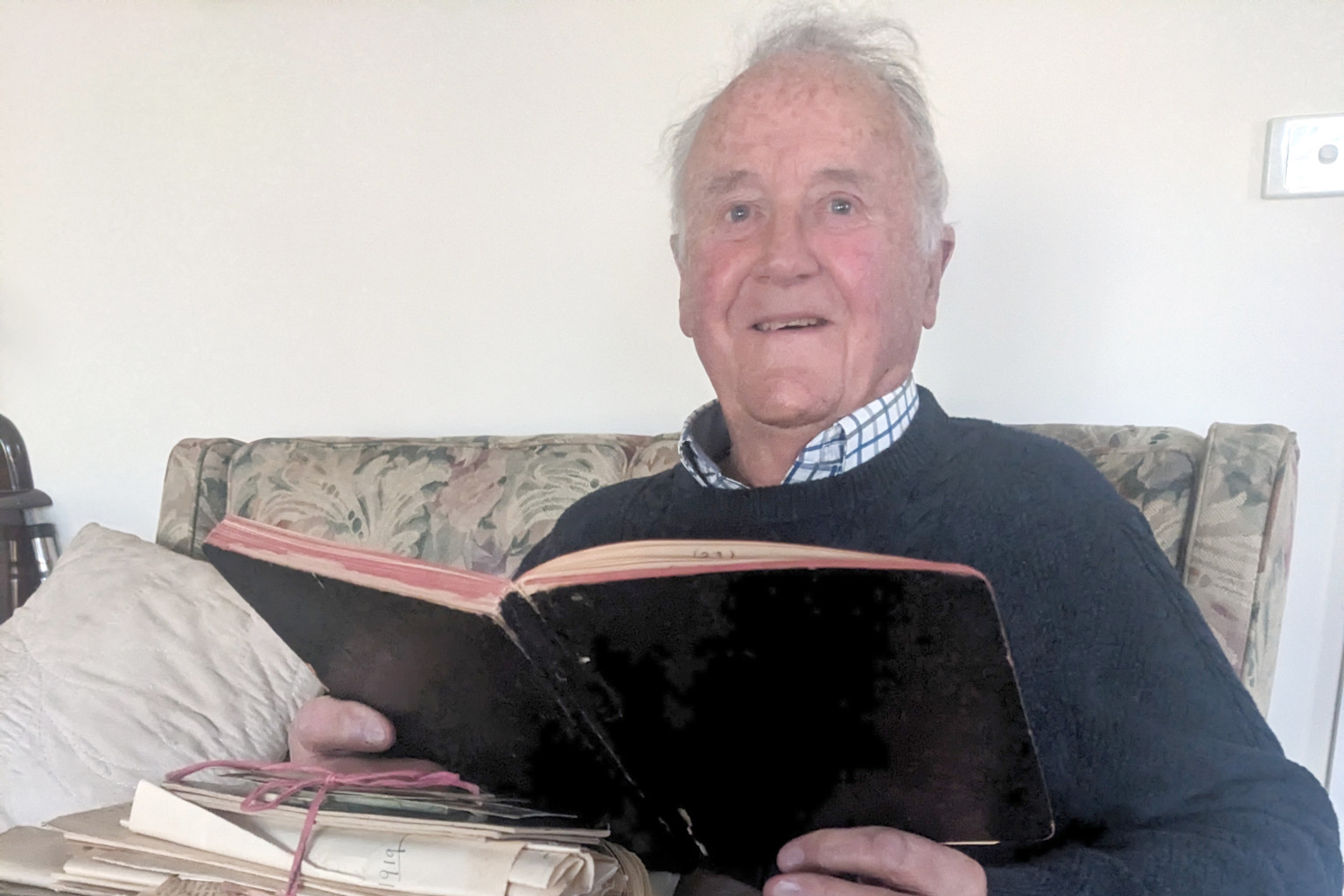General News
18 February, 2024
Farmer's prolific diaries reveal history in detail
An upper cupboard in a Wimmera homestead has opened its doors to an intriguing treasure trove of farming and community history.

An upper cupboard in a Wimmera homestead has opened its doors to an intriguing treasure trove of farming and community history.
Most of the volumes in the cupboard are the recollections of Arthur Richards who lived at Belmont, built in 1912 at Gymbowen, west of Horsham, and where they were found.
Mr Richards, who died in Horsham in 1942 aged 85, was a prolific writer and chronicled life around him over the decades in the copperplate writing of the time.
These documents are now in the care of Roger Gabbe, his grandson, who also lived in the homestead with wife Jillian before retiring to Horsham.
The writings tell of every aspect of farming from land selection in the 1800s to community events across a wide area, including Binnum Station and Penola in South Australia and Coleraine in the Western District as well as across the Wimmera.
Dozens of handwritten notes, letters, documents, diaries, invoices and other items were uncovered when Mr Gabbe asked son Matthew to collect the contents from the cupboard.
Neither had any idea of the volume of items, preserved in the closed cupboard over the decades from mice, dust and insects.
Many were in a large round tin hat box.
Mr Richards’ notes are all the more astounding because at age nine and as the oldest child, he left his parents and brothers and the family home at Binnum Station to be “borrowed” to work as a farm labourer for his maternal grandfather John Watts,who farmed near Coleraine.
The family believes that was the end of his formal education.
Also, at that time the cost to attend school was one shilling and sixpence a week per student and that sum was not easy to find, especially if there were many children in the one family.
Mr Richards’ parents George and Suzannah had emigrated to Australia in the 1850s.
George, born in London, and Suzannah, from Norfolk, met in Australia when builder George was constructing a homestead at Binnum Station, where Suzannah had taken a maid’s job so she could be closer to her family.
The family had several moves over the years.
George died at Penola aged 57.
His son Arthur, who wrote the diaries, was a squatter before taking up his first selection of 320 acres in 1879 at Gymbowen.
Mr Gabbe said the family had always known of a “black book” which contained his grandfather’s writings.
It was presented to him by an aunt, Muriel Richards, in 1964.
But they were unaware of the volume or nature of the other information found in the cupboard.
They have now discovered that the “black book” was a summary of some of the diary entries found in the cupboard.
Mr Gabbe said he was daunted by the volumes of information and how best to handle it but was fascinated with the detail and the stories.
He is considering adding further chapters, following on from 1942.
“My grandfather must have loved to write. As well as about the farm and family, he wrote histories of the towns where he lived,” he said.
“He wrote about everything.”
The diaries have an entry that one year grass parrots ate half the crop.
Another fact that amazed Mr Gabbe was that after most harvests the bagged wheat was usually taken from Gymbowen to Horsham by bullock dray - a round trip of eight days, meaning moving the entire crop took three months to complete, with about 70 bags in each load.
If horse teams were used, it was a faster trip.